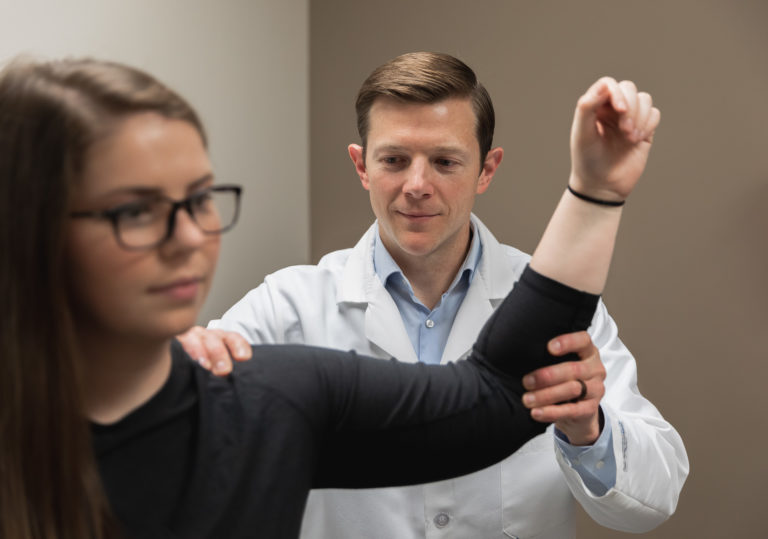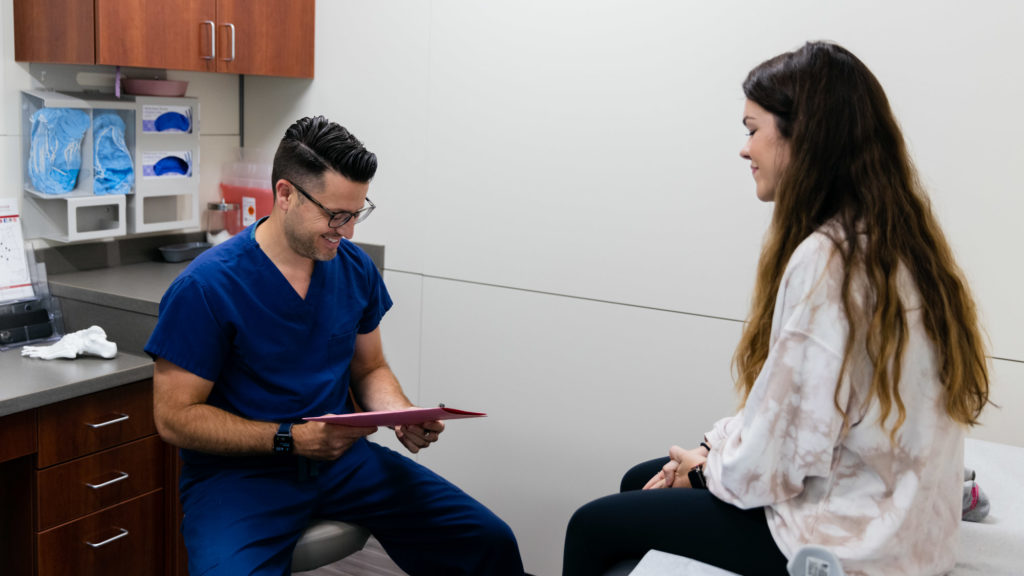 As an orthopedic surgeon specializing in neck and back conditions, I see many patients with sciatica. They describe pain, weakness, numbness, and/or a “pins and needles” tingling sensation that begins in the lower back and radiates down the back of the leg, typically on only one side of the body. The level of lower back pain and leg pain can range from mild discomfort to severe aches.
As an orthopedic surgeon specializing in neck and back conditions, I see many patients with sciatica. They describe pain, weakness, numbness, and/or a “pins and needles” tingling sensation that begins in the lower back and radiates down the back of the leg, typically on only one side of the body. The level of lower back pain and leg pain can range from mild discomfort to severe aches.
It is important to understand that sciatica is not a diagnosis, but rather a set of symptoms resulting from a problem with the sciatic nerve. This nerve — the largest in the body — runs from the back of the pelvis down through the back of the thigh. Patients with sciatica can experience pain anywhere along the nerve. To provide effective treatment, we must focus on the source of the problem, which is often a pinched nerve in the lower (lumbar) spine.
Common Causes of Sciatica
The following conditions are common causes of sciatica:
- Herniated disc (a.k.a. bulging disc or ruptured disc). The round, shock-absorbing discs between vertebrae can weaken from normal aging, obesity, injury or other causes. When these discs slip out of place, they can press against the nearby sciatic nerve and cause sciatica.
- Spinal stenosis. This condition causes narrowing of the spinal canal, which can put pressure on the nerves and produce the pain, numbness and tingling of sciatica.
- Spondylolisthesis. This condition occurs when one vertebra slips forward on another, causing spinal instability that closes the gap through which the nerve passes.
Nonsurgical Treatment for Sciatica
As I mentioned, the ultimate goal is to treat the underlying cause of your sciatica, not just the symptoms. Good news: Given enough time, sciatica usually heals on its own. In fact, 80 to 90 percent of patients with sciatica improve within weeks. Nonsurgical treatment options to relieve pain and increase mobility include:
- Rest. But not too much. Avoid staying in bed for prolonged periods, as this may worsen your symptoms. Keep moving and return to your normal physical activity as soon as possible.
- Over-the-counter medicines. Non-steroidal anti-inflammatory drugs (NSAIDs) like ibuprofen and aspirin can help with the pain.
- Heat and cold. Hot and/or cold packs applied to the sore area might provide some relief.
- Physical therapy. Special exercises that take pressure off the nerve can reduce pain and increase flexibility.
- Injections. A cortisone-like injection into the affected spinal area can reduce inflammation and relieve pain.
Surgery for Sciatica
Surgery is typically reserved for patients whose symptoms have not improved or have worsened after a few months of conservative treatment. In severe cases, patients might experience significant weakness, a lack of bladder or bowel function, or nerve damage. Surgery aims to repair the herniated disk or other structure that is pinching the nerve. Surgical procedures include:
- Microdiscectomy. Recommended for patients with sciatica caused by a herniated disc, this procedure involves removing the part of the disc that is pinching the sciatic nerve.
- Laminectomy. The bony covering that curves around the spinal cord is called the lamina. In this procedure, which is recommended for patients whose sciatica is caused by spinal stenosis, I remove the lamina that is pressing against the nerve.
Rehabilitation after surgery consists of special exercises to strengthen your back, and limiting bending and twisting movements as much as possible.
If you are experiencing sciatica pain and want to discuss treatment options, please make an appointment by calling 913-319-7600.
About the Author
 Theodore Koreckij, M.D. is a board-certified and fellowship-trained orthopedic surgeon specializing in conditions of the spine, including adult degenerative disorders and conditions associated with metastatic disease.
Theodore Koreckij, M.D. is a board-certified and fellowship-trained orthopedic surgeon specializing in conditions of the spine, including adult degenerative disorders and conditions associated with metastatic disease.
***
The medical information contained in the Dickson-Diveley Orthopaedics website is provided to increase your knowledge and understanding of orthopedic conditions. This information should not be interpreted as a recommendation for a specific medical or surgical treatment plan. As each patient may have specific symptoms or associated problems, the treatment regimen for a specific patient may not be the proper treatment for another.
Gaining knowledge and understanding of a particular problem or condition is the first step in any medical treatment plan. I believe the information presented on our website will be helpful for those individuals experiencing ankle pain, or other related problems. However, this information is not intended to replace the advice of your family physician. You are encouraged to consult with your physician to discuss any course of treatment presented or suggested.


